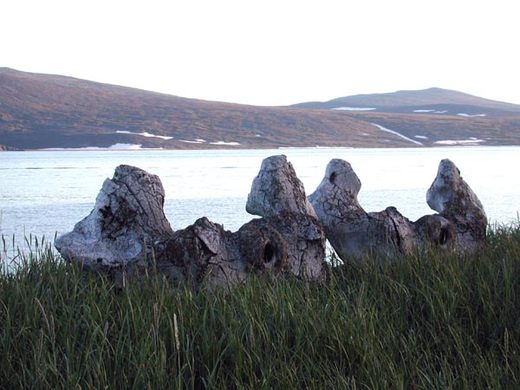Whale Bone Alley
Siberian whale bones stand as cairns marking location of an ancient butcher yard.
Jutting out of the northern tip of Siberia’s remote Yttygran Island, giant whale ribs and vertebrae mark the area known as Whale Bone Alley, where once the great sea beasts were slaughtered and their meat stored by the local tribes.
Consisting of hundreds of whale bones, mainly jawbones, ribs, and vertebrae, Whale Bone Alley is thought to have been created around 600 years ago by a cooperative group of native tribes. Many of the bones were placed in long rows along the shore giving the site its evocative name. In addition to the massive bones that were planted into the ground, a number of pits used for storing meat were found with fossilized whale bits still in them. The overall effect is of a haunting titan’s boneyard.
Researchers and archaeologists believe that the site was established as a place of mutual worship and ritual for the united tribes. There seems to be the remains of a sacred site near the bottom of the “alley,” and the meat pits were believed to store food for the gathered tribesmen. However, this high-minded history of the site may simply be a case of seeing smoke without fire. The locals in the area, many of whom are descended from the civilizations which created the site believe that Whale Bone Alley was nothing more than a gathering place where hunters could come together and butcher their catch as a group.
Whichever reading of the area’s history is correct, one thing is currently true of the site: tourists love it. The stunning bone formations have been luring more and more tourists from all over the world each year.


















Follow us on Twitter to get the latest on the world's hidden wonders.
Like us on Facebook to get the latest on the world's hidden wonders.
Follow us on Twitter Like us on Facebook